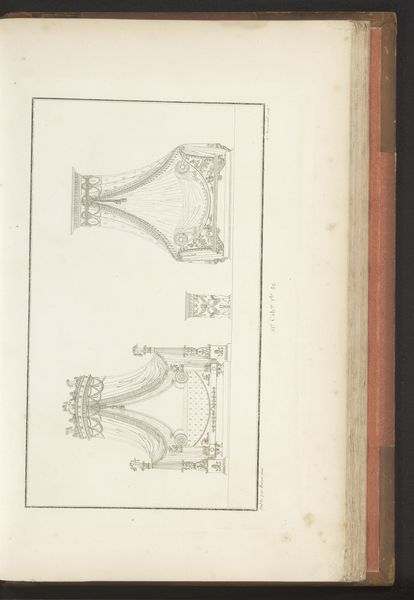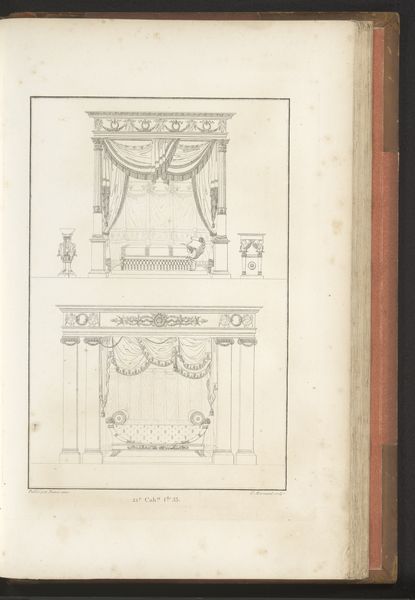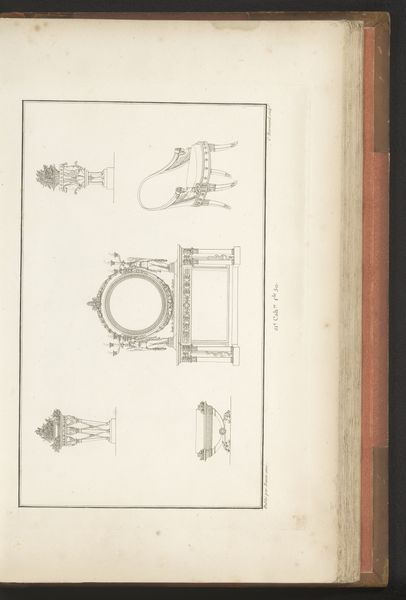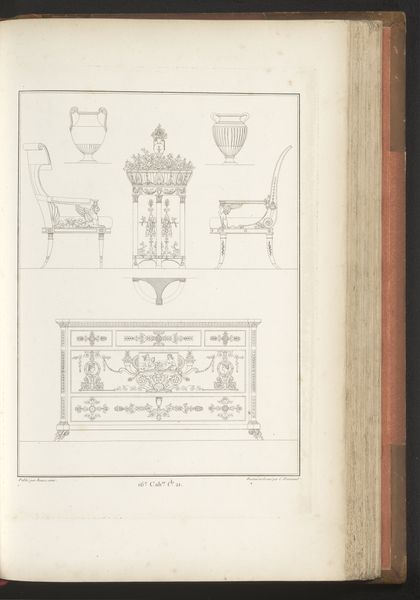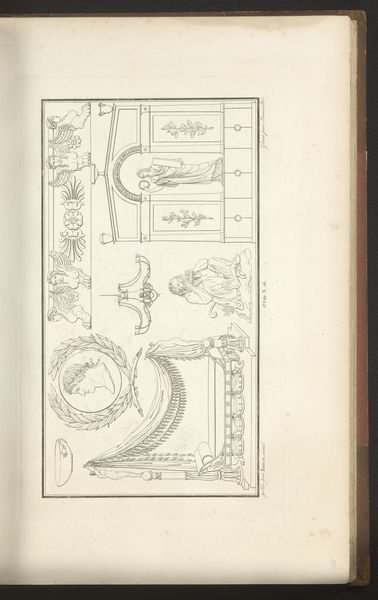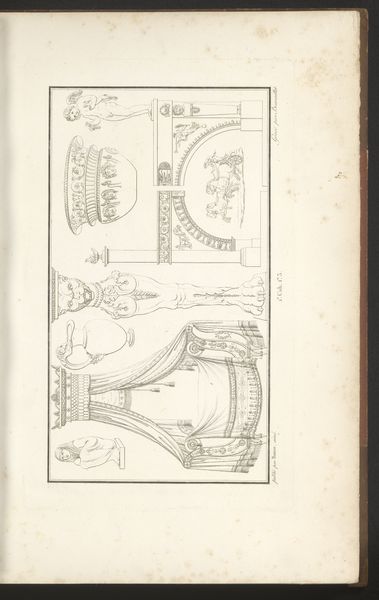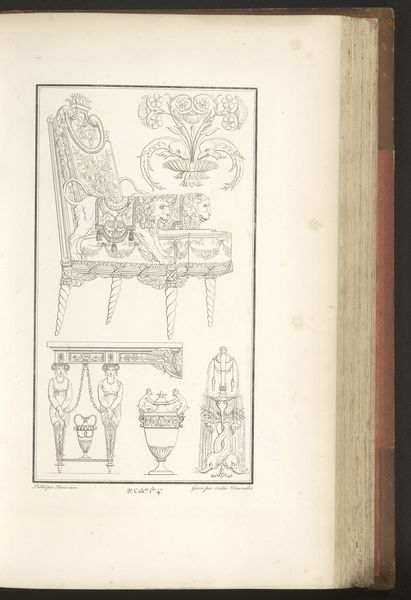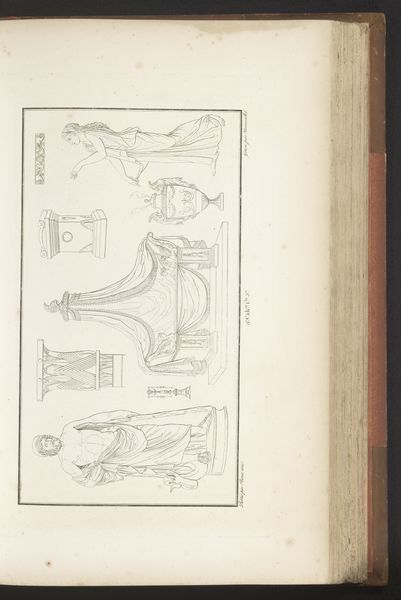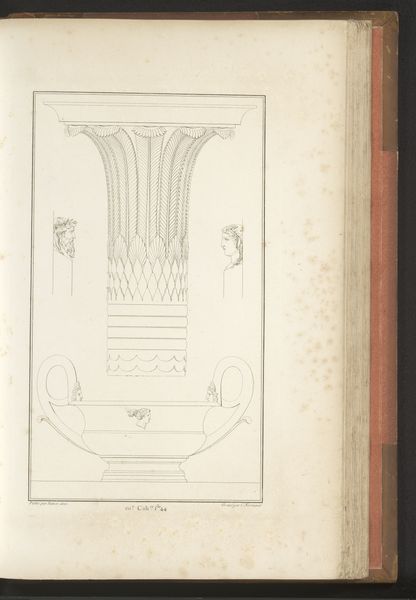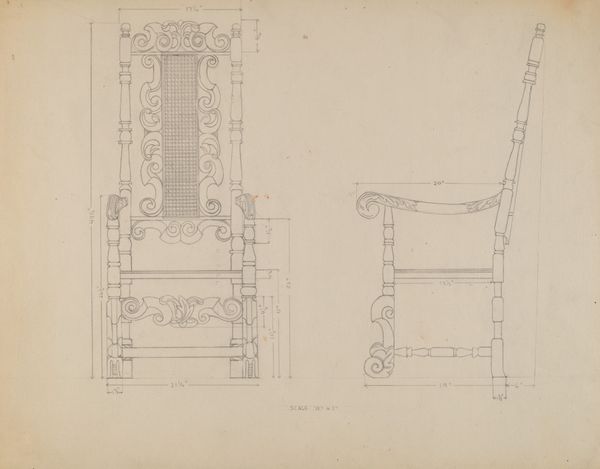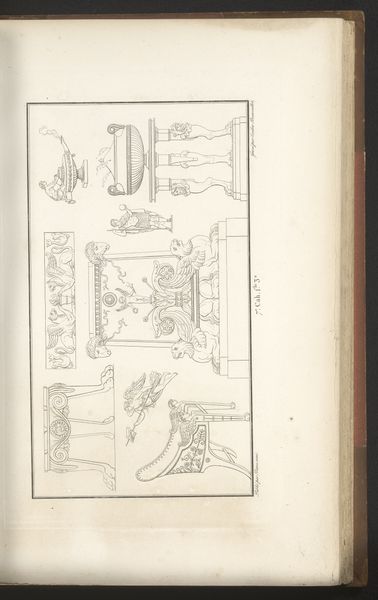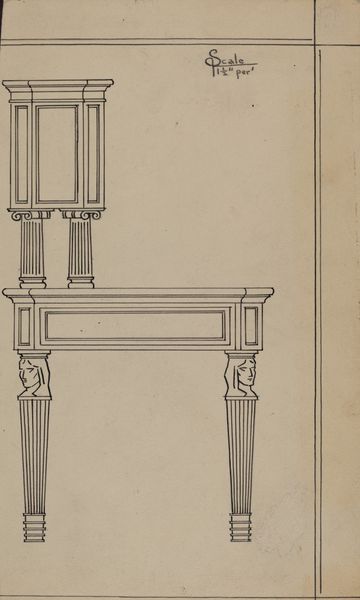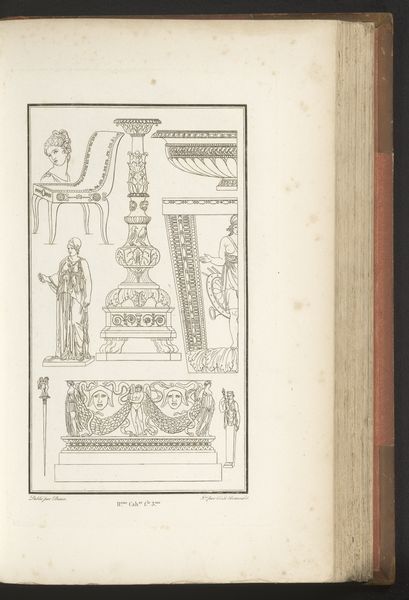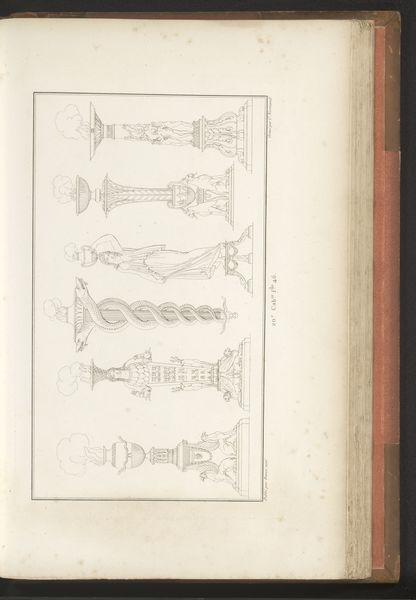
drawing, paper, ink, engraving, architecture
#
drawing
#
neoclacissism
#
paper
#
ink
#
geometric
#
line
#
engraving
#
architecture
Dimensions: height mm, width mm
Copyright: Rijks Museum: Open Domain
Editor: This drawing, titled "Wandbekleding" from 1820, is made with ink engraving on paper by Charles Pierre Joseph Normand. It depicts what appears to be a detailed design for wall decorations. The linear precision gives it a sense of classical formality, but I'm curious – what strikes you most about it? Curator: The process and materiality here are fascinating. Engraving, with its reliance on reproducible techniques, democratizes design. It allowed these Neoclassical ideals, usually reserved for elite patrons, to be circulated widely among artisans and a growing middle class who desired to emulate upper-class taste through consumer goods. Consider the labor involved. Editor: So, you're saying it’s not just a drawing but a blueprint for mass consumption? Curator: Exactly. The drawing isn't precious in itself, but as a vector of dissemination. These aren't singular artworks but prototypes to guide manufacture. How might the cost of materials influence who could afford to actually implement this design in their homes? Did certain workshops or regions specialize in particular aspects of the wall covering production? These questions push us to consider beyond formal aesthetics and analyze the artwork within systems of production, consumption, and social class. Editor: That’s an angle I hadn’t considered. It makes you wonder how faithful the final product would be to this initial design, and what variations emerged due to material constraints. Curator: Precisely. Thinking about these drawings less as fine art and more as technical documents illuminates a whole new landscape of 19th-century material culture and its intricate social relations. Editor: This really shifted my perspective on how to interpret even seemingly straightforward pieces like this one. It's less about admiring and more about understanding the who, how, and why behind its creation and impact. Curator: And by recognizing that, we unlock the artwork’s potential to speak volumes about the broader economic and cultural dynamics of its time.
Comments
No comments
Be the first to comment and join the conversation on the ultimate creative platform.
